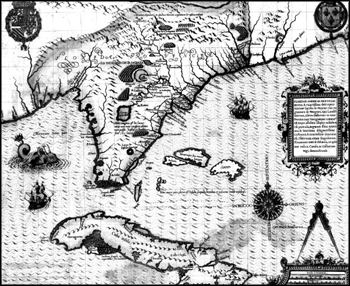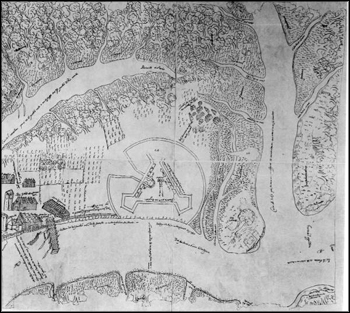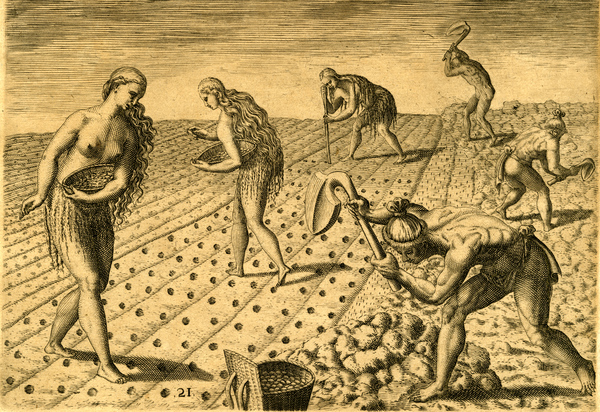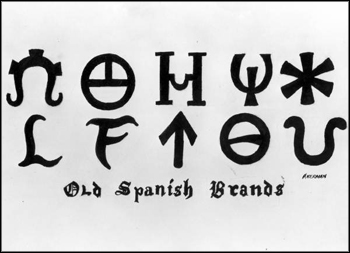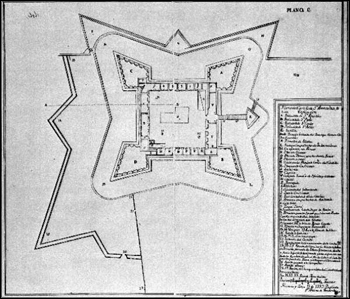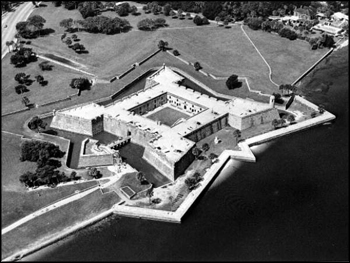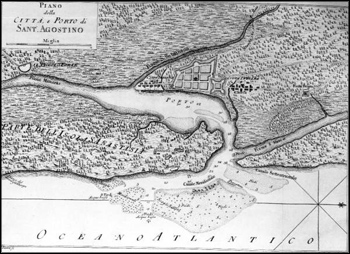Photo Exhibits
Photo exhibits spotlight various topics in Florida history, and are accompanied by brief text intended to place selected materials in historical context.
Plantation Culture
Land and Labor in Florida History
This exhibit presents images that illustrate the changing nature of social relations on large estates throughout Florida's history. The text provides a brief overview of changes in labor and land use in Florida from the arrival of Europeans and Africans to the present.
Spanish Florida, 1565-1763
Plantation agriculture and the institution of slavery existed in Florida long before the United States took control of the territory in 1821. Spaniards established the first plantations near St. Augustine in the 16th and 17th centuries. Spanish planters grew limited quantities of agricultural products—including corn, rice, sugar and citrus—using Native American and African slave labor.
Early map of La Florida and the Caribbean from Theodore de Bry's Grand Voyages (1591)
Image Number: RC02246
For his Florida images, de Bry relied on watercolors produced by Jacques Le Moyne de Morgues. Le Moyne accompanied Jean Ribault on his expedition to establish a French colony in northeastern Florida. In 1565, the Spanish destroyed the short-lived French settlement, known as Fort Caroline, located near the mouth of the St. Johns River.
Floridianos (Spaniards living in Florida) consumed most of what they produced. The small amount of agricultural goods exported from Florida helped feed the Spanish Caribbean. Spaniards capitalized on the agricultural societies they encountered in northern Florida. Apalachee and Timucua Indians grew and harvested corn for the Iberian colonists. Indian porters carried sacks of corn to St. Augustine for shipment to Caribbean sugar islands.
Spanish map of the town and fort at St. Augustine (1593)
Image Number: RC11116
"How they till the soil and plant," from de Bry Grand Voyages (1591)
Image Number: DG00981
De Bry published Le Moyne's watercolors to garner support for European colonization. By portraying Native Americans as primitive yet hardworking people, de Bry hoped to soothe fears about the New World and encourage the spread of European civilization among the indigenous population.
Disease and Enslavement
Indigenous Floridians suffered greatly from contact with deadly diseases introduced by Europeans and Africans. By the middle of the 17th century, disease and enslavement had decimated coastal indigenous populations. Native American groups in the interior fared slightly better, though in the long term also experienced the impact of ecological and environmental change brought about by the arrival of Europeans and Africans. Europeans turned to African slave labor following the decimation of Florida's indigenous people.
Old Spanish Cattle Brands (ca. 18th century)
Image Number: RC05555
Spanish Ranchos
The demographic collapse of Florida's indigenous population allowed the Spanish to engage in new uses of the land. Raising livestock became central to the Spanish Florida economy by the middle of the 17th century. La Chula, one of the largest Spanish ranchos (ranches) in the 1600s, was located on the Alachua Prairie south of modern day Gainesville.
Spanish ranchers abandoned interior settlements such as La Chula following a series of cooperative raids by British soldiers and Creek Indians in the late 17th and early 18th centuries. Muskogee-speaking Native Americans slowly migrated into the region and seized cattle formerly worked by Spanish ranchers and their slaves.
Plan of the Castillo de San Marcos: St. Augustine, Florida (1737)
Image Number: PR03386
End of the Spanish Missions in La Florida
Persistent attacks on Spanish settlements and missions by the British and the Creeks greatly reduced herding and agricultural activities in La Florida. In 1704, Carolina settlers and their Creek Indian allies destroyed Mission San Luis west of present-day Tallahassee. This decisive blow against the Spanish mission system displaced Apalachees living west of the Suwannee River.
Apalachee refugees fled to St. Augustine, west towards Louisiana, or became captives of the Creeks and the British. The British enslaved hundreds of Apalachee Indians on sugar-producing islands in the Caribbean. Creek Indians participated in the process of enslavement, though likely adopted some of the Apalachee into their own ranks.
Aerial view of the Castillo de San Marcos National Monument: St. Augustine, Florida (20th century)
Image Number: PR03387
Fort Mose
Fortifications such as the Castillo de San Marcos in St. Augustine helped protect Spanish settlements against invaders. In order to defend St. Augustine, the Spanish tempted British-owned African slaves with the prospect of freedom if they fled to Florida and converted to Catholicism.
The Spaniards organized runaway slaves into militia units to fortify St. Augustine. Fort Mose, located just north of St. Augustine, is regarded as the first settlement of free Africans in the Americas. The Fort Mose militia participated in the defense of St. Augustine on several occasions throughout the 1700s.
Italian map of St. Augustine, Florida (1778)
Image Number: RC03591
Fort Mose is located to the right (north) of the Spanish and Apalachee town, adjacent to a small creek.
The Population Vacuum
Persistent slave raids and warfare in the late 17th and early 18th centuries created a population vacuum in northern and central Florida. After the destruction of the mission system, Spanish settlers, their slaves, and the few Apalachee Indians remaining in Florida retreated to within a short distance of St. Augustine and Pensacola until the 1760s.
Native American immigrants from the north gradually moved into the abandoned lands. By the 1750s, Seminole towns had supplanted previous settlements west of St. Augustine.

 Listen: The Folk Program
Listen: The Folk Program